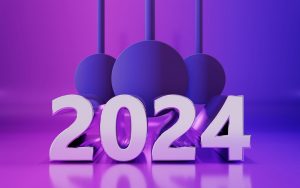Unpacking “Basic Economy”: A Lesson in Price Discrimination …
Explore the economics of basic economy fares and discover how airlines use price discrimination. Learn more in our insightful analysis.
Introduction to Basic Economy Fare
Understanding Basic Economy
Basic Economy is a fare class introduced by airlines to offer a lower-cost option for budget-conscious travelers. This fare type typically provides the same seating as standard economy but comes with more restrictions.
The introduction of Basic Economy is part of a broader strategy to segment the market and cater to different customer needs.
By offering a stripped-down version of their standard economy product, airlines can attract price-sensitive customers who might otherwise choose a low-cost carrier. This fare class allows airlines to compete on price while maintaining the ability to upsell additional services and amenities.
Key Features of Basic Economy
Basic Economy fares often come with several limitations compared to standard economy tickets.
Passengers purchasing these fares may face restrictions such as no seat selection, limited or no access to overhead bin space, and no changes or refunds. These limitations are designed to differentiate the product from higher fare classes and encourage customers to pay for added flexibility and comfort.
Despite these restrictions, passengers still receive the same in-flight service, including meals and entertainment, as those in standard economy.
This ensures that the core travel experience remains consistent, while the ancillary services are where the differences lie.
The Economics of Price Discrimination
Basic Economy fares are a classic example of price discrimination, a strategy where businesses charge different prices for the same product based on customer segments. Airlines use this approach to maximize revenue by capturing consumer surplus from different market segments.
By offering a tiered pricing structure, airlines can cater to both price-sensitive and price-insensitive customers.
This strategy allows airlines to fill more seats, particularly during off-peak times, while still charging premium prices for those who value flexibility and additional services. As a result, airlines can optimize their load factors and improve overall profitability.
Impact on Consumer Choice
The introduction of Basic Economy fares has expanded consumer choice, allowing travelers to select a fare that best fits their budget and travel needs.
While some travelers may appreciate the lower upfront cost, others might opt for higher fare classes to avoid the restrictions associated with Basic Economy.
This segmentation of fare classes empowers consumers to make informed decisions based on their priorities, whether it’s saving money or enjoying added conveniences. Ultimately, Basic Economy fares exemplify how airlines leverage price discrimination to enhance their competitive edge and meet diverse customer preferences.
Strategies for Implementing Price Discrimination
Segmenting the Market
One of the primary strategies for implementing price discrimination is market segmentation.
Airlines, for instance, categorize passengers into different segments based on their willingness to pay. This can be achieved by analyzing booking patterns, travel purposes, and purchasing behaviors.
Business travelers, who often book last-minute, are typically less price-sensitive compared to leisure travelers, allowing airlines to charge higher prices for the same seat.
Versioning and Tiered Pricing
Another effective strategy is versioning, where different versions of a product or service are offered at varying price points. In the airline industry, this is exemplified by the introduction of “Basic Economy” fares.
These fares offer fewer amenities compared to standard economy tickets, catering to price-sensitive travelers while preserving higher prices for those who value additional services. This tiered pricing approach ensures that each customer segment pays according to their needs and preferences.
Dynamic Pricing
Dynamic pricing involves adjusting prices in real-time based on demand, competition, and other external factors.
Airlines use sophisticated algorithms to modify ticket prices as the departure date approaches, ensuring optimal revenue from each seat. This strategy allows airlines to capitalize on peak travel periods and fill seats during slower times, maximizing profitability through strategic price adjustments.
Utilizing Data Analytics
Data analytics plays a crucial role in implementing price discrimination effectively.
By leveraging big data, companies can gain insights into consumer behavior, preferences, and price sensitivity. This information enables airlines to tailor their pricing strategies more accurately, offering personalized discounts or promotions to specific customer segments.
Advanced analytics tools help in predicting demand trends, allowing for more informed pricing decisions.
Implementing Restrictions and Conditions
Imposing restrictions and conditions on lower-priced tickets is another strategy used to differentiate between customer segments. For example, “Basic Economy” tickets often come with limitations such as non-refundable terms, no seat selection, and additional fees for checked baggage.
These conditions make the lower-priced option less attractive to those who value flexibility and convenience, steering them towards higher-priced alternatives.
Impact of Basic Economy on Consumer Behavior
Understanding Consumer Choices
The introduction of basic economy fares has significantly influenced consumer decision-making processes. By offering a lower price point, airlines tap into a segment of travelers who prioritize cost over comfort.
This pricing strategy appeals particularly to budget-conscious individuals and those who travel infrequently. Consumers are now more inclined to evaluate their travel needs critically, weighing the trade-offs between cost savings and the lack of amenities.
Moreover, the availability of basic economy options has led to increased price sensitivity among consumers.
Travelers are more likely to compare fares across different airlines, seeking the best deal that meets their minimum requirements. This behavior underscores the effectiveness of price discrimination in capturing a wider audience by catering to varying consumer preferences.
Perceived Value and Satisfaction
Basic economy fares have reshaped consumer perceptions of value in air travel.
While these fares offer a lower upfront cost, the restrictions and lack of flexibility often associated with them can lead to a perception of reduced value. Consumers who opt for basic economy may experience lower satisfaction levels if their expectations are not managed effectively.
Airlines must balance transparency and communication to ensure that consumers understand what they are purchasing.
Clear disclosures about restrictions and potential additional costs are crucial in maintaining consumer trust and satisfaction. When consumers feel informed and in control of their choices, their overall satisfaction with the travel experience can improve, even at the basic economy level.
Behavioral Shifts and Loyalty
The introduction of basic economy fares has prompted shifts in consumer loyalty patterns.
Travelers who frequently choose basic economy may develop a transactional relationship with airlines, focusing primarily on price rather than brand loyalty. This behavior can challenge airlines to innovate and differentiate their offerings to retain customers.
However, basic economy can also serve as an entry point for airlines to build long-term relationships with new customers.
By providing a satisfactory experience at a lower price point, airlines have the opportunity to convert basic economy travelers into loyal customers who may eventually opt for higher fare classes as their travel needs evolve.
Future Trends in Airline Pricing Models
Dynamic Pricing Algorithms
Airlines are increasingly adopting dynamic pricing algorithms to optimize ticket pricing in real-time. These sophisticated algorithms analyze a plethora of data points, including demand fluctuations, competitor pricing, and even individual customer behavior.
By leveraging machine learning, airlines can adjust prices on the fly, ensuring that they maximize revenue while offering competitive rates. This trend is expected to become more prevalent as data analytics technologies continue to advance.
Personalized Pricing
With the rise of big data, airlines are moving towards personalized pricing strategies.
By collecting data on customer preferences, travel history, and purchasing behavior, airlines can tailor prices to individual passengers. This approach not only enhances customer satisfaction by offering more relevant deals but also allows airlines to implement price discrimination more effectively.
Personalized pricing is likely to become a cornerstone of airline pricing models in the near future.
Subscription-Based Models
Some airlines are experimenting with subscription-based models, offering customers the option to pay a monthly fee for a certain number of flights or benefits. This model provides a steady revenue stream and enhances customer loyalty by locking in frequent travelers.
As consumers become more accustomed to subscription services in other industries, airlines may increasingly adopt this model to differentiate themselves in a competitive market.
Unbundling of Services
The trend of unbundling services, which began with the introduction of basic economy fares, is likely to continue. Airlines will increasingly offer a la carte pricing, allowing passengers to pay only for the services they need, such as baggage, seat selection, and in-flight meals.
This approach not only caters to budget-conscious travelers but also provides airlines with additional revenue streams. As competition intensifies, unbundling will play a crucial role in airline pricing strategies.
Blockchain and Transparent Pricing
Blockchain technology holds the potential to revolutionize airline pricing models by providing greater transparency and reducing transaction costs.
By utilizing blockchain, airlines can offer more transparent pricing structures, which can build trust with consumers. Additionally, smart contracts could automate and streamline the booking process, leading to cost savings for both airlines and passengers.
As blockchain technology matures, its integration into airline pricing models could become a significant trend.
FAQ
Q: What is the concept of “Basic Economy” in airline pricing?
A: “Basic Economy” is a pricing strategy used by airlines to offer a lower-cost option for travelers. This fare typically comes with fewer amenities and more restrictions compared to standard economy tickets. The idea is to segment the market by offering a no-frills option for price-sensitive customers while still providing more comprehensive services at higher price points for those willing to pay more.
Q: How does price discrimination work in the context of “Basic Economy” fares?
A: Price discrimination in “Basic Economy” fares involves charging different prices for the same service based on consumer characteristics and preferences. Airlines use this strategy to maximize revenue by capturing different segments of the market. For example, leisure travelers who are more price-sensitive might opt for the lower-cost “Basic Economy” fare, while business travelers who value flexibility and additional services might choose higher-priced options.
Q: What are the economic benefits for airlines using “Basic Economy” pricing?
A: The economic benefits for airlines using “Basic Economy” pricing include increased revenue through market segmentation and enhanced capacity utilization. By offering a range of fares, airlines can attract a broader customer base, filling more seats on each flight. Additionally, the upsell potential from ancillary fees and upgrades allows airlines to boost their overall profitability while catering to diverse consumer needs.
Takeaway
In conclusion, understanding the intricate economics behind “Basic Economy” and price discrimination can provide valuable insights for businesses looking to optimize their pricing strategies. By implementing these principles effectively, companies can maximize profits while offering diverse pricing options to cater to different customer segments. Stay ahead of the competition by mastering the art of price discrimination and unlocking the full potential of your business. Embrace these strategies today and start reaping the benefits of a well-crafted pricing strategy. According to a report by Bloomberg,











Comments